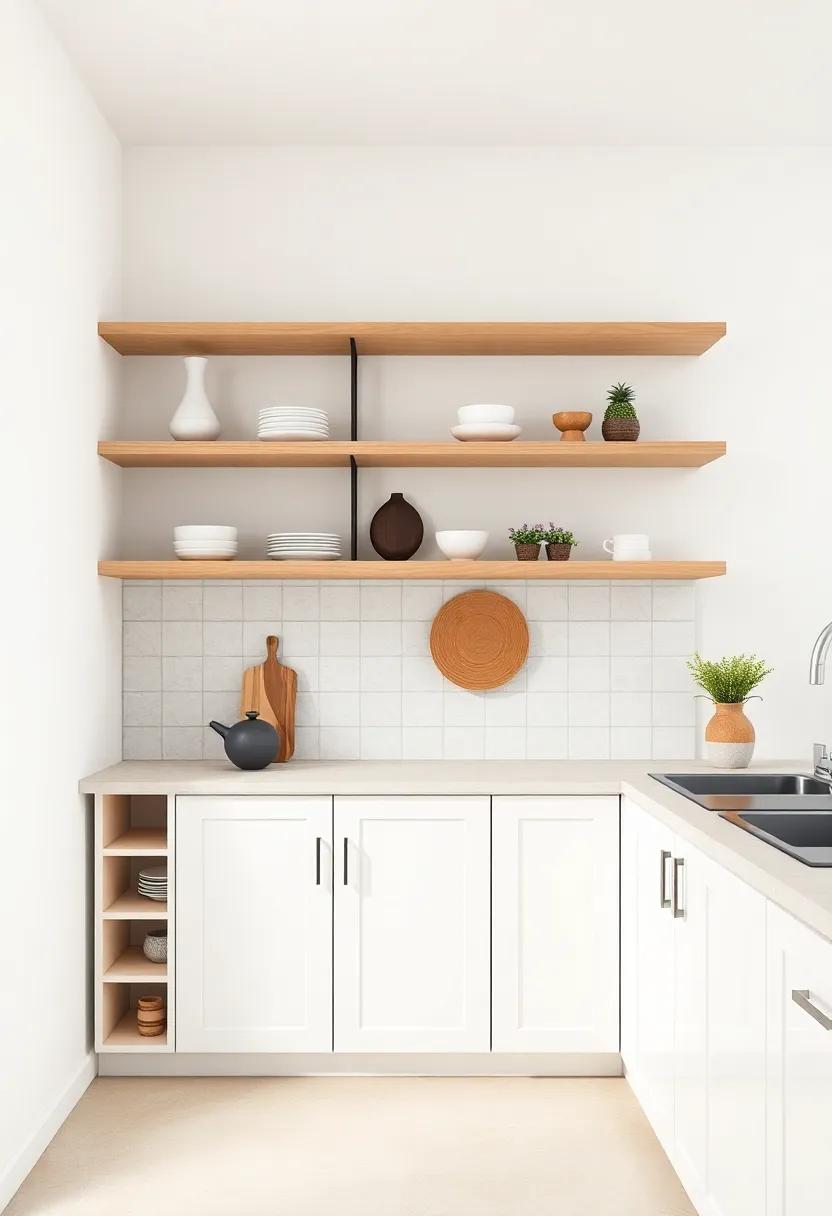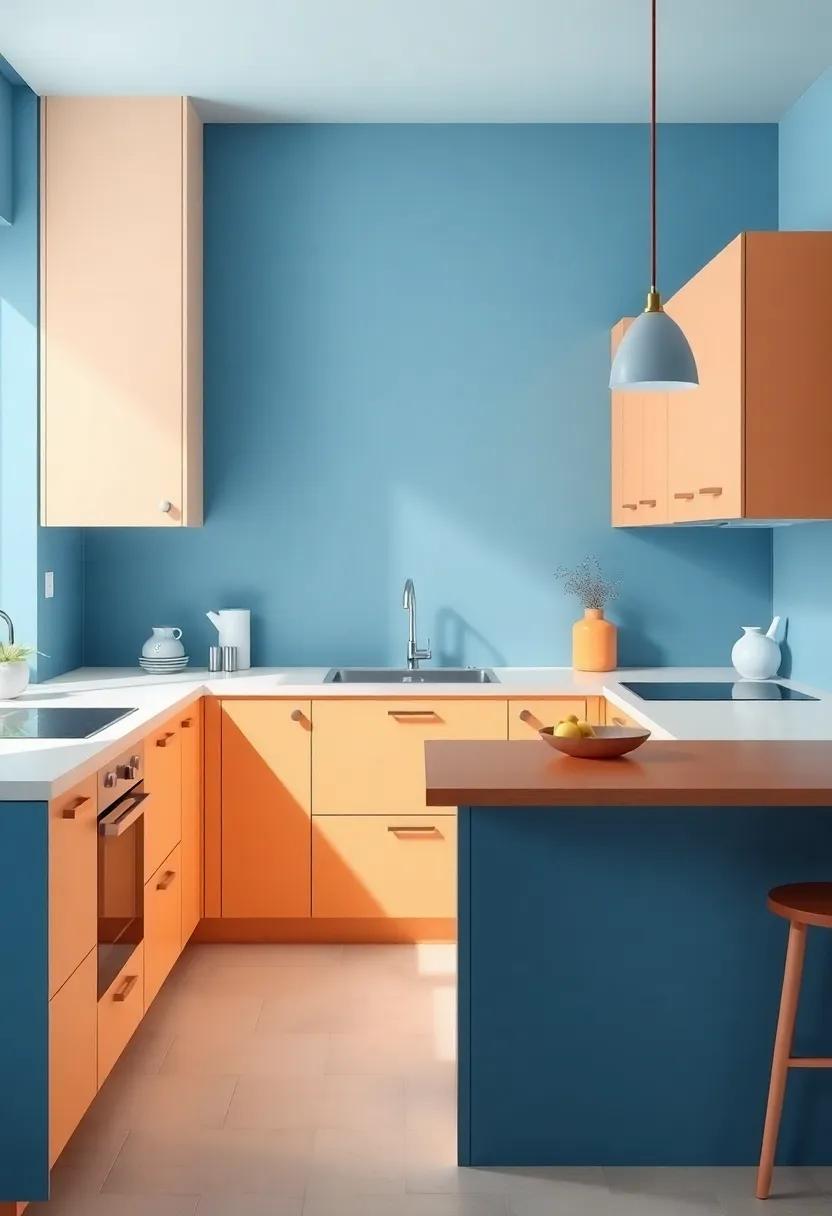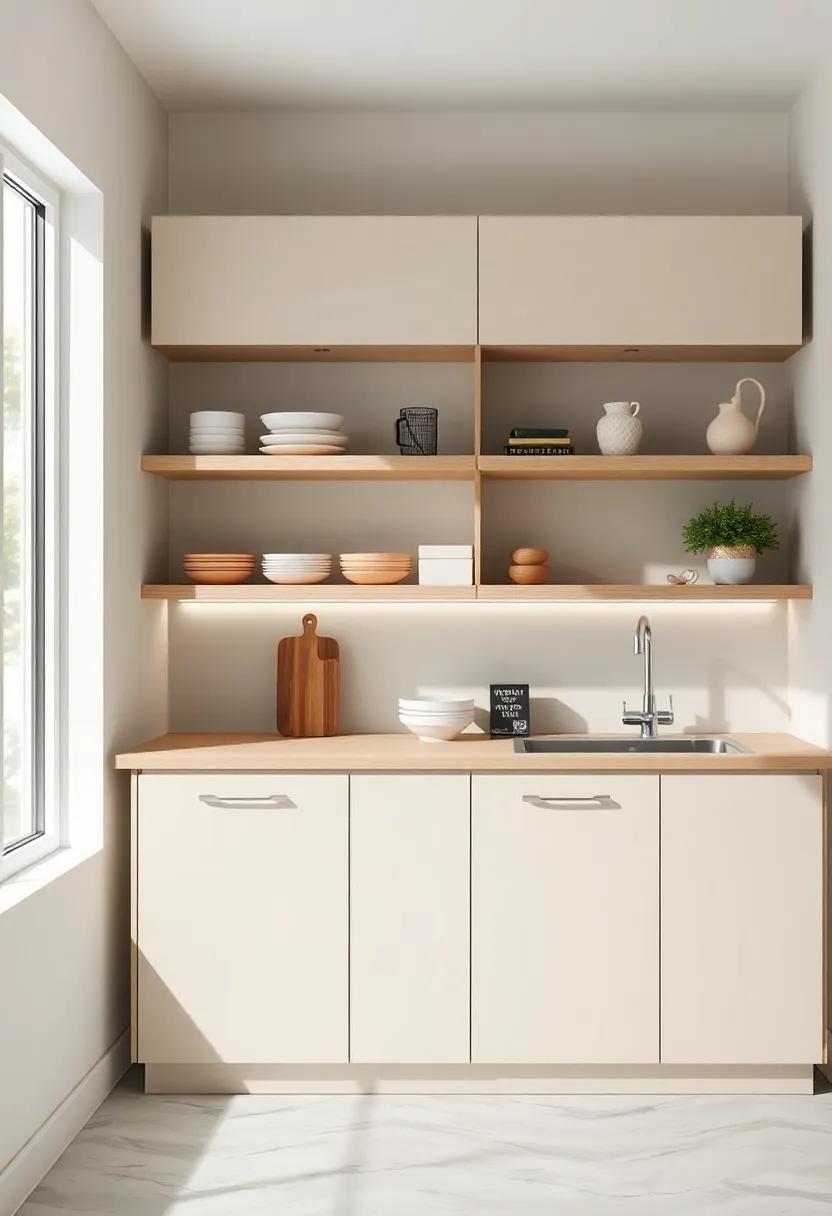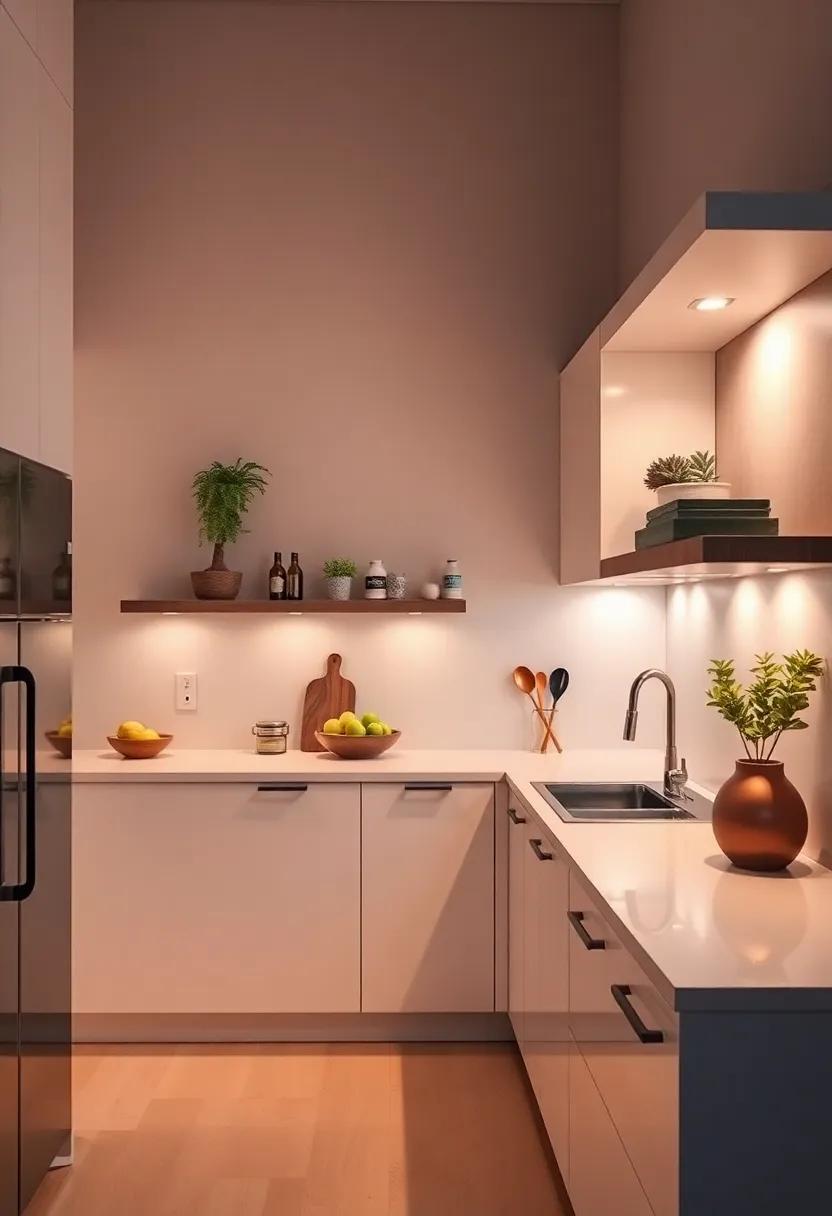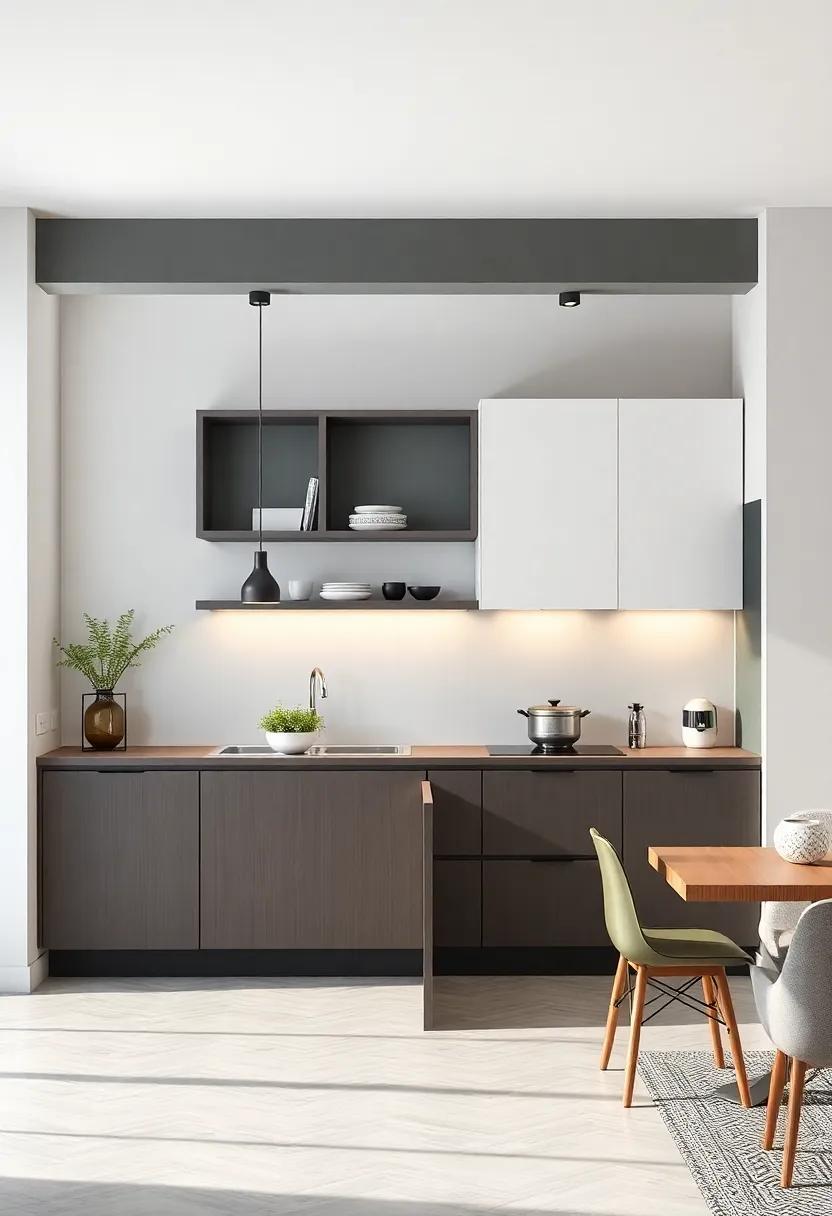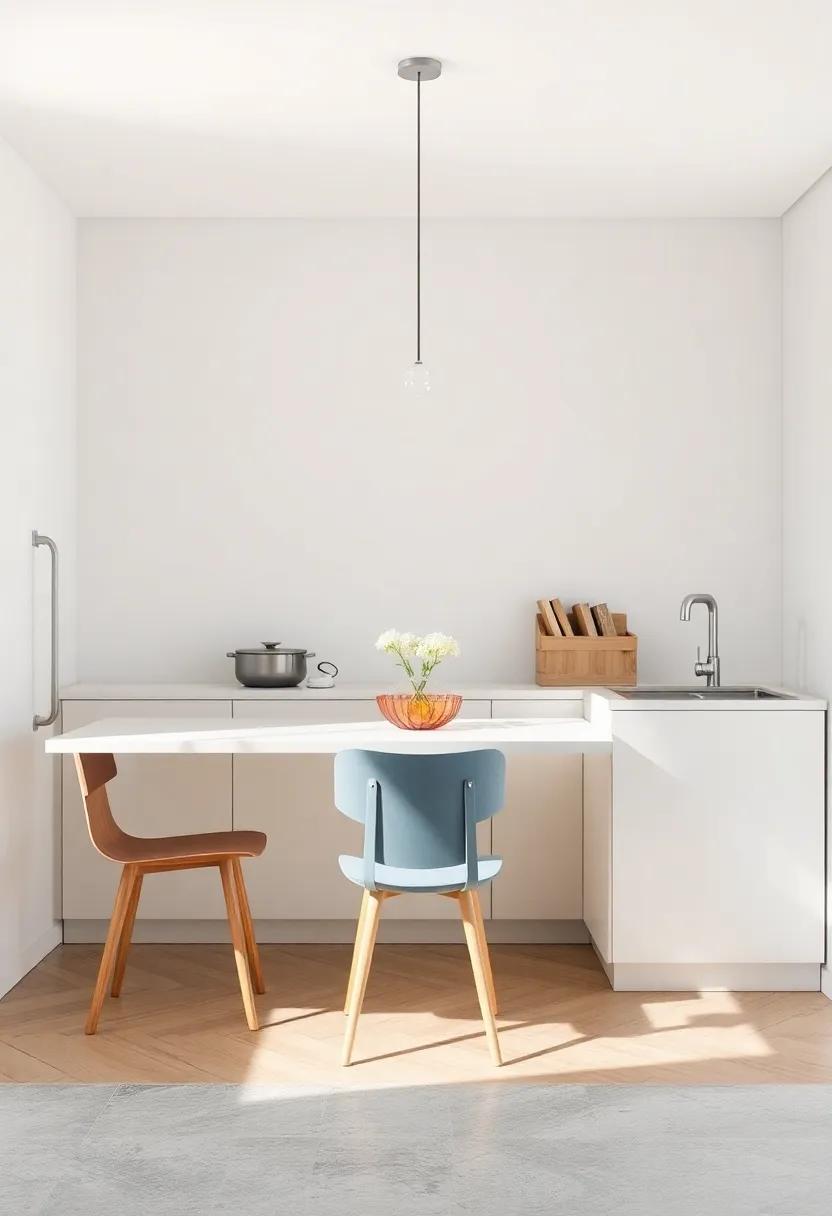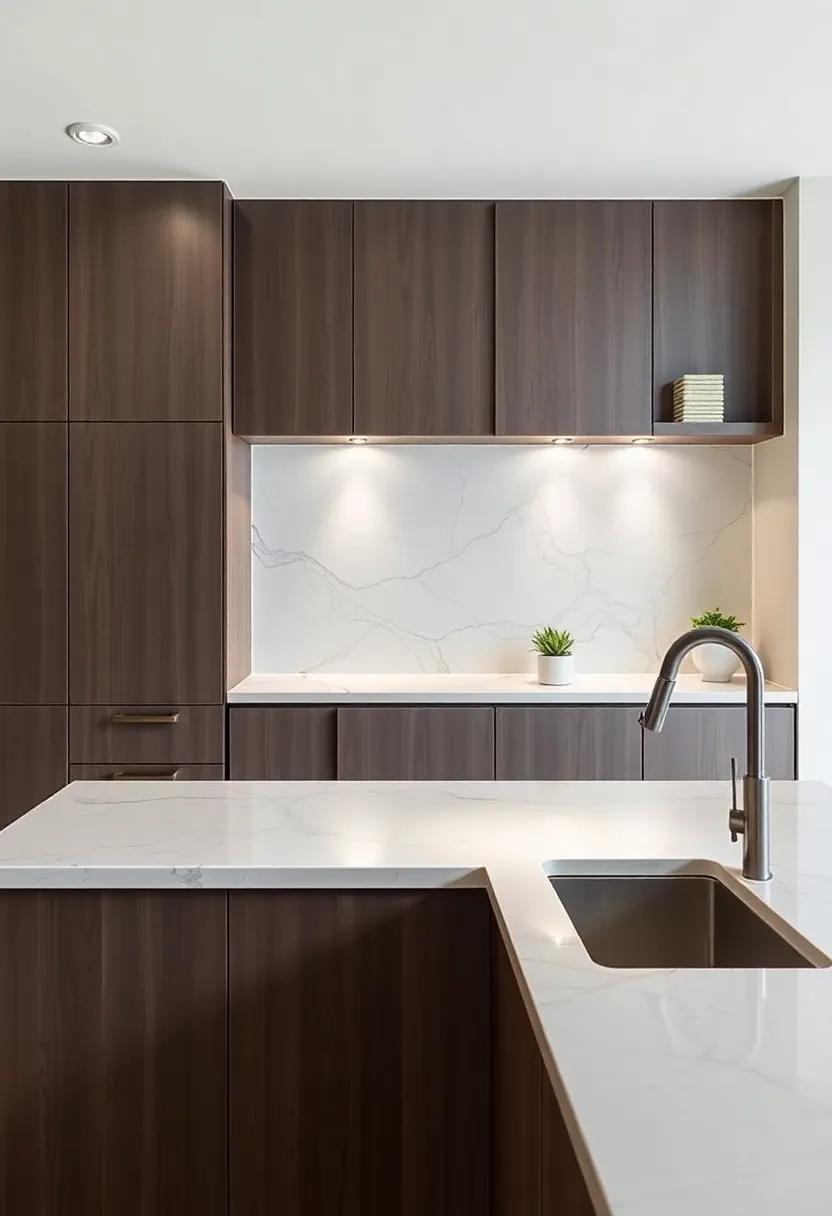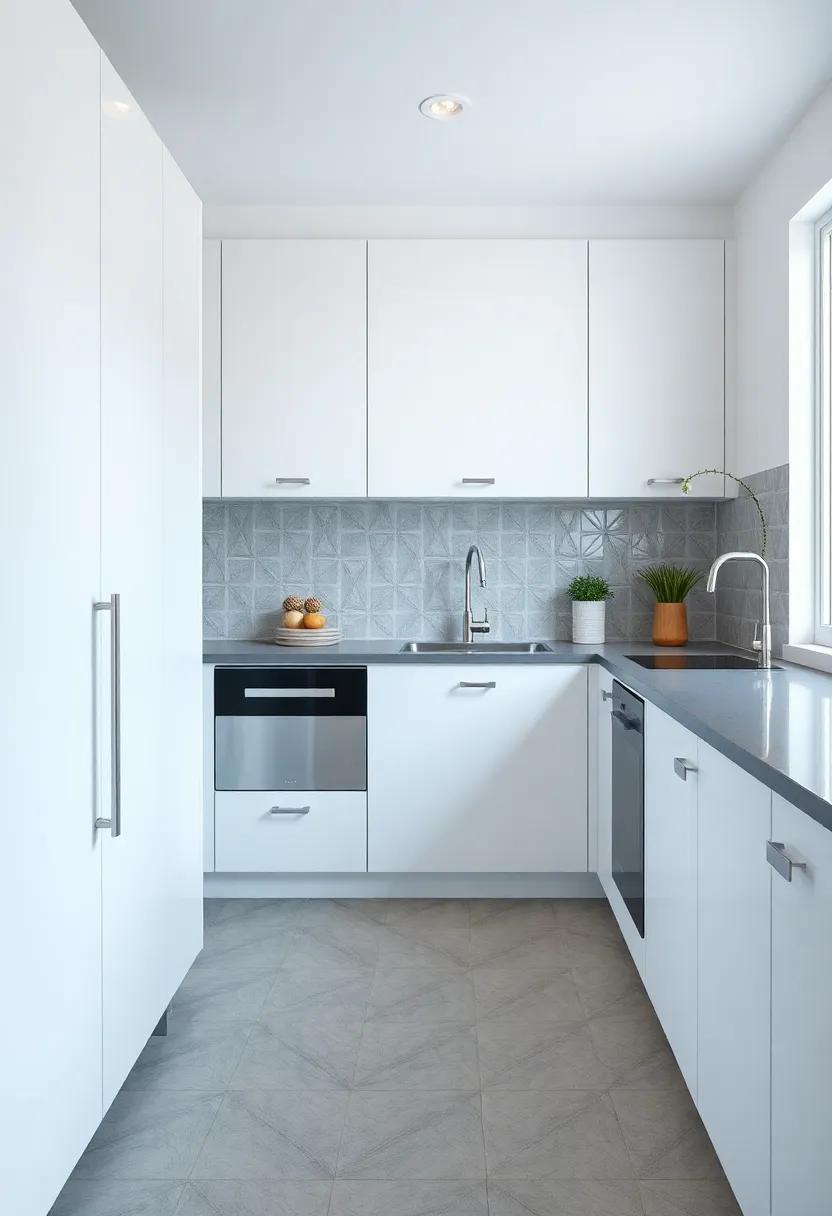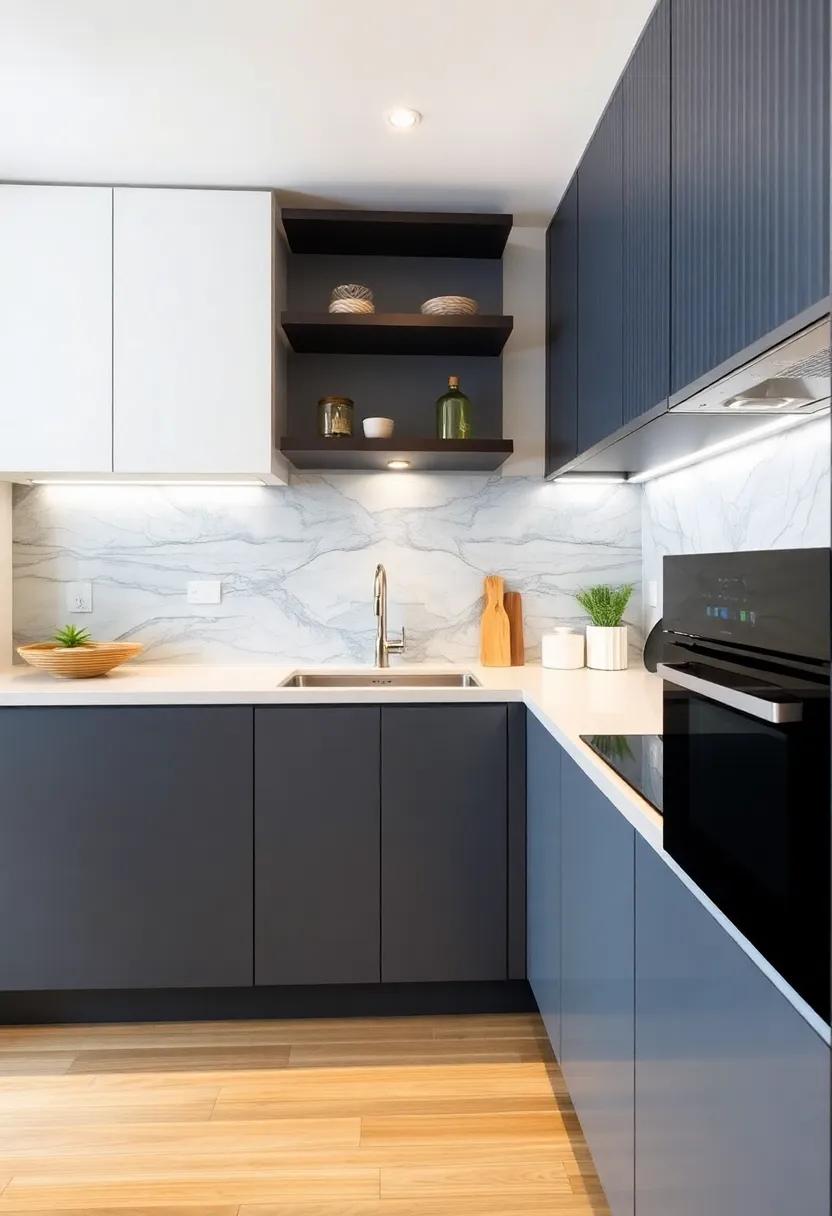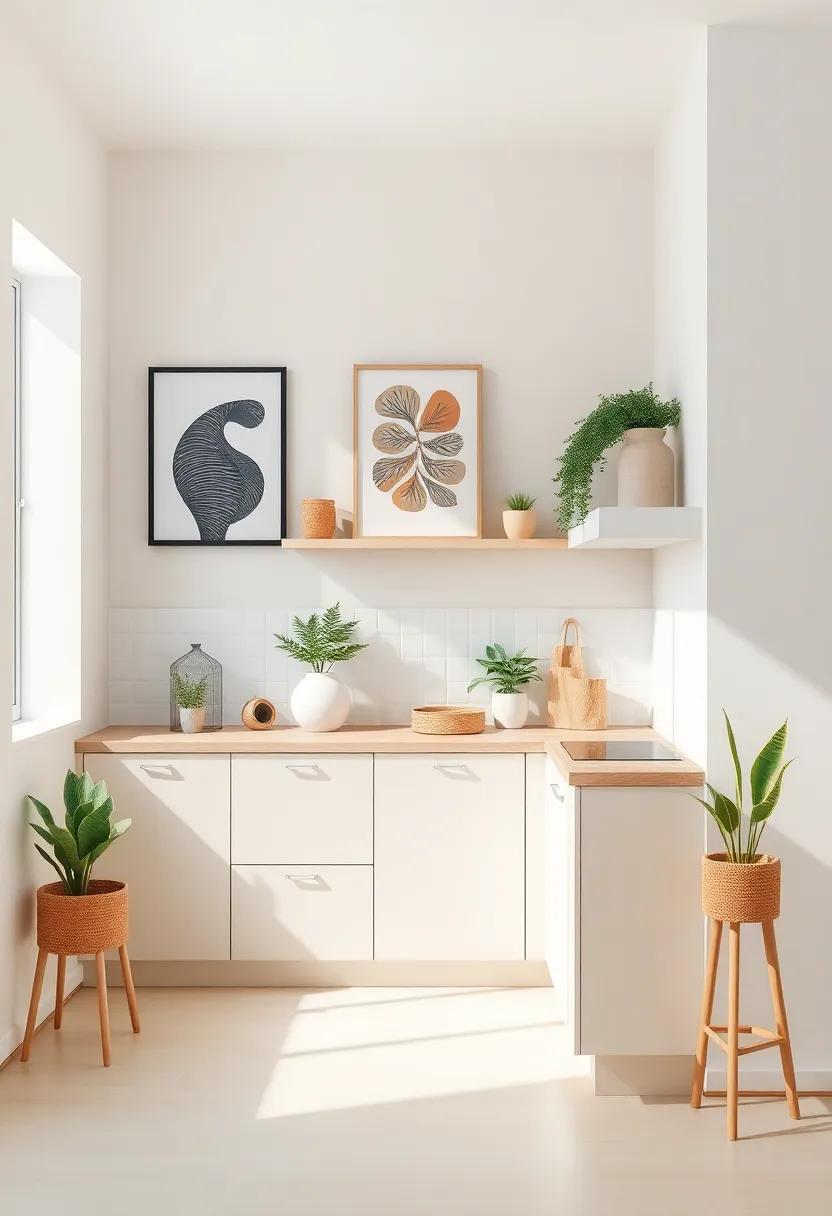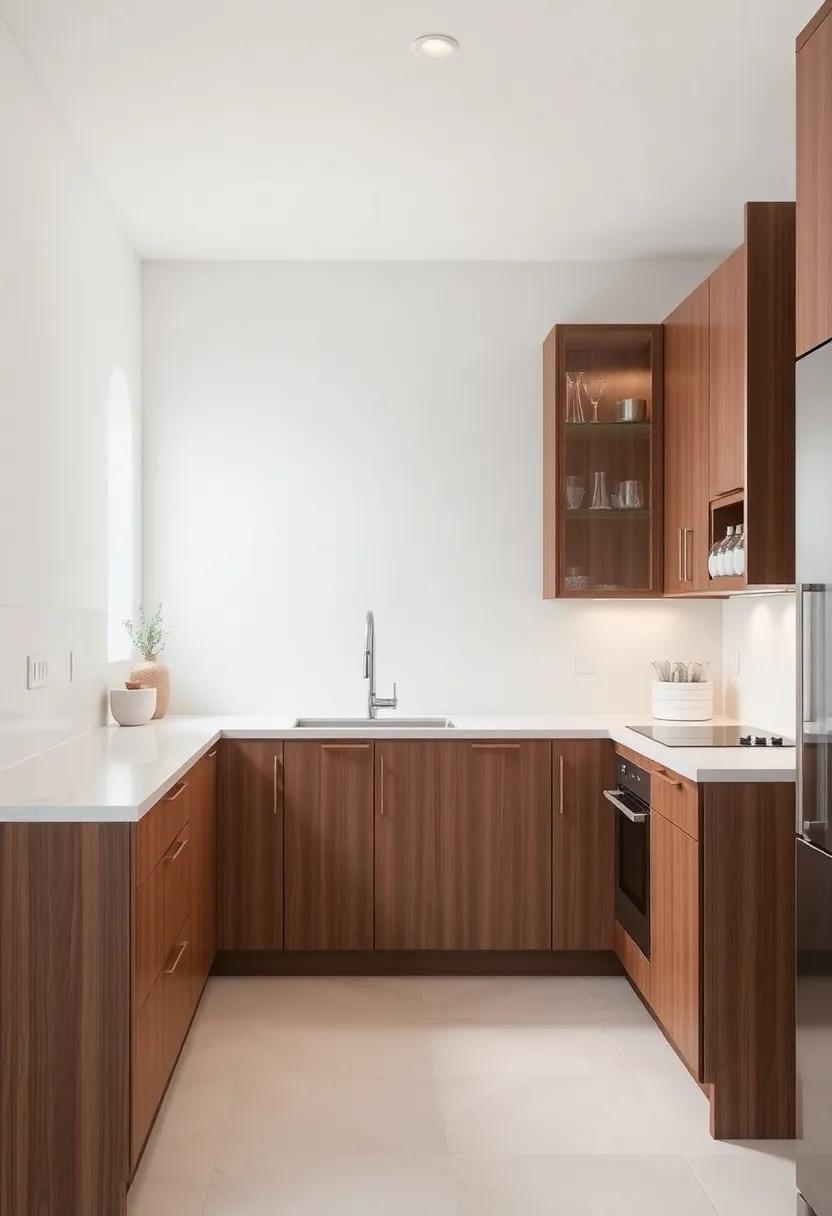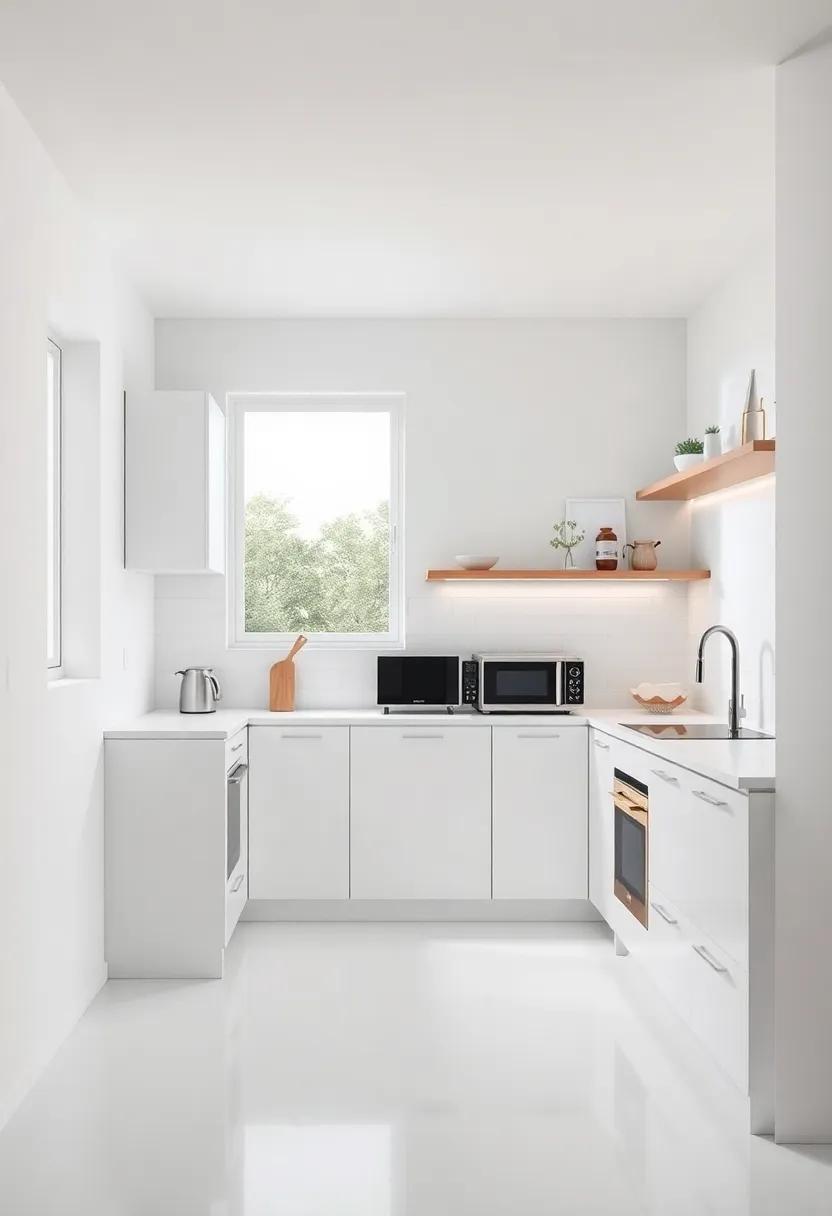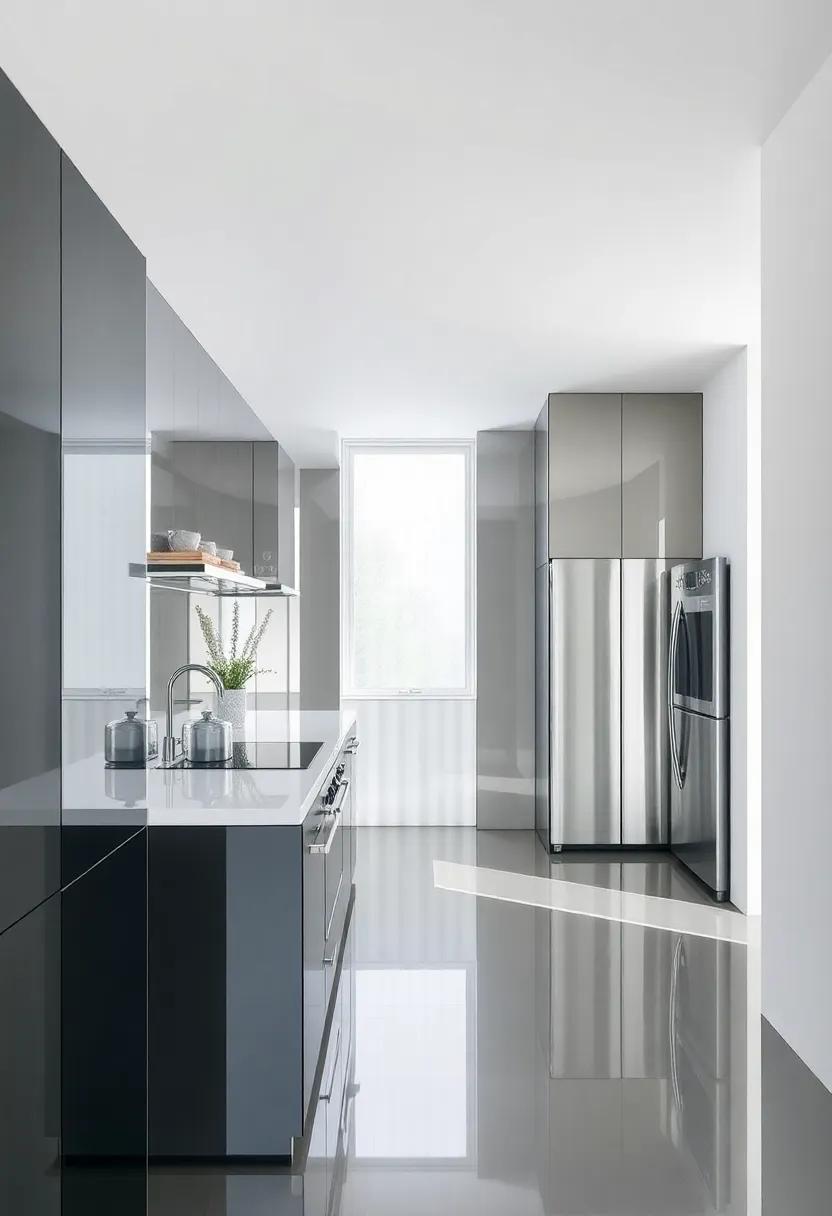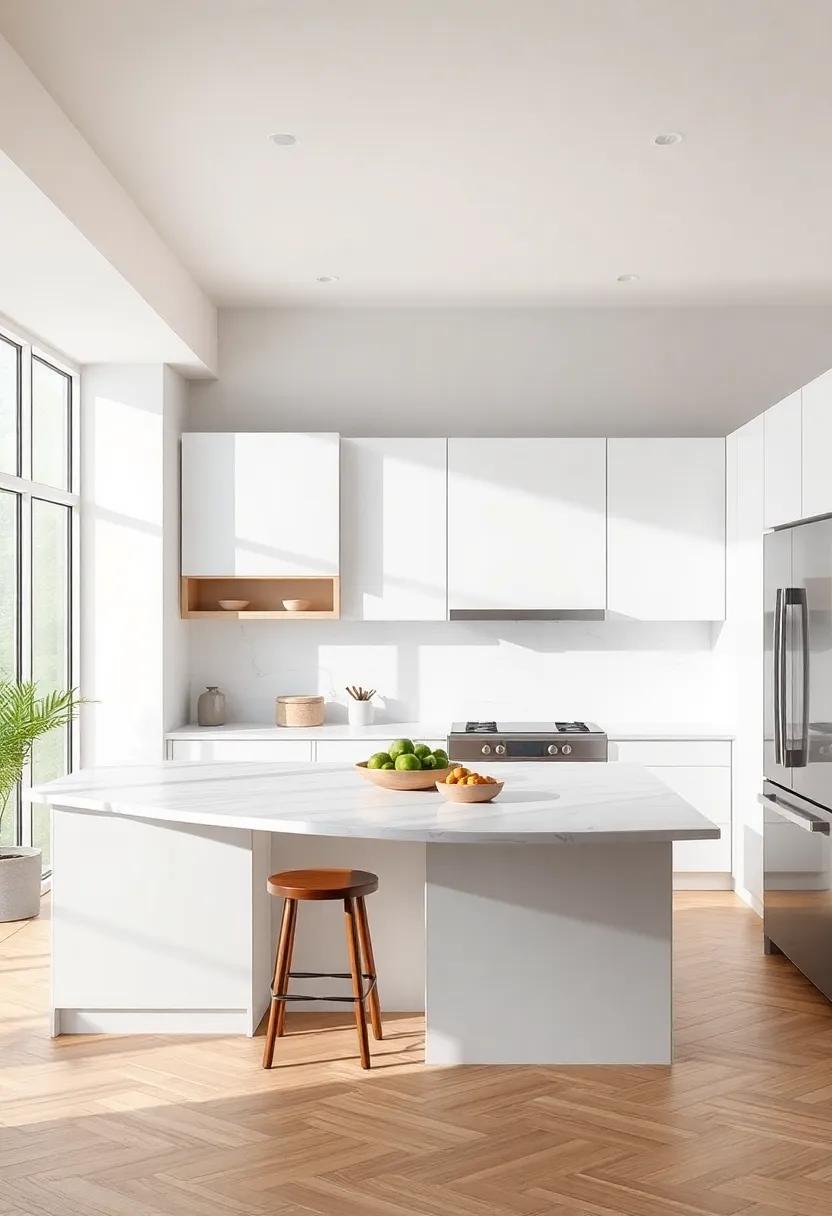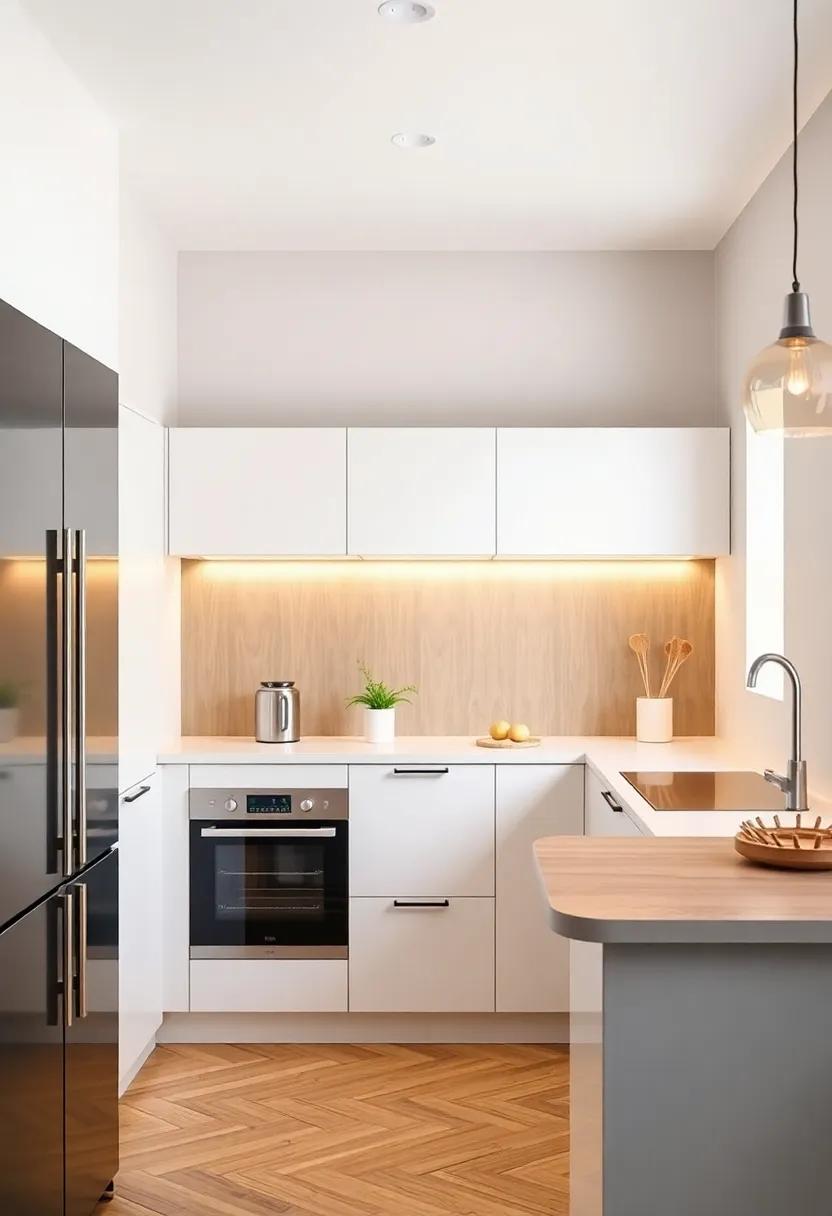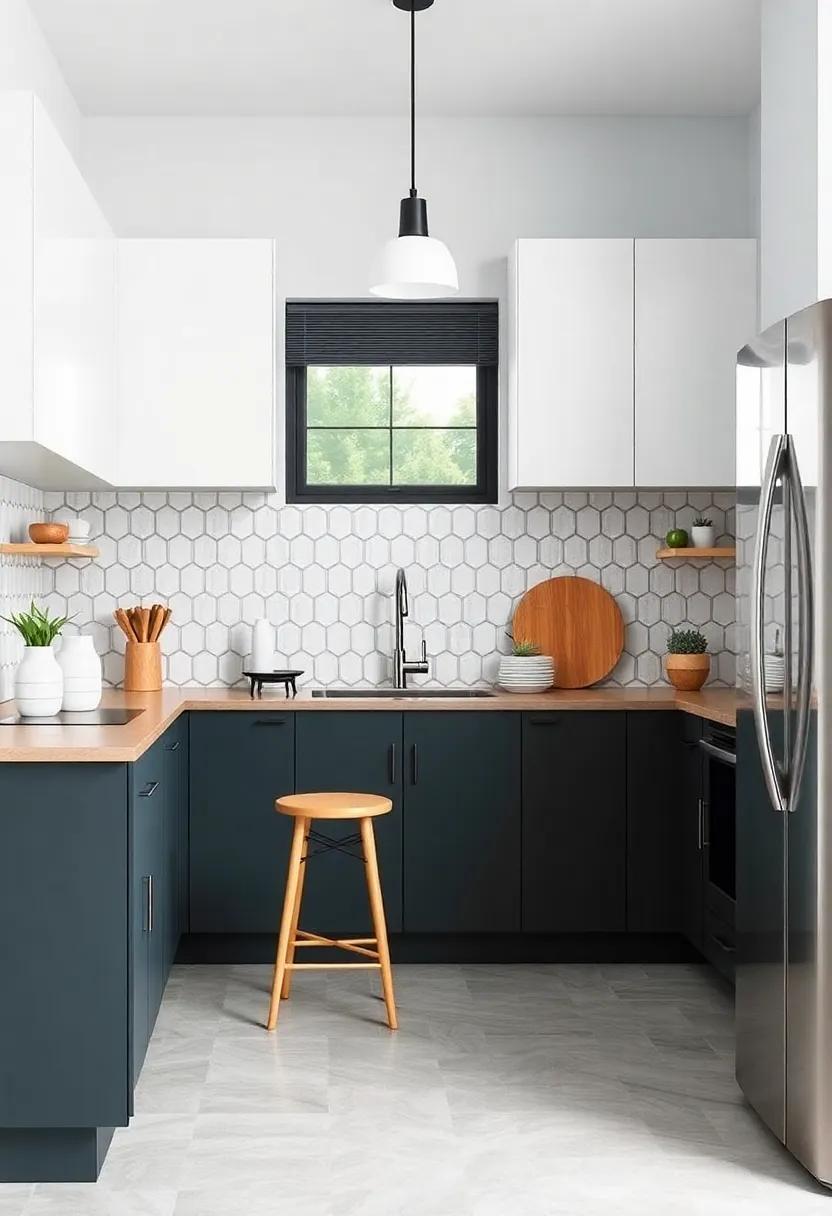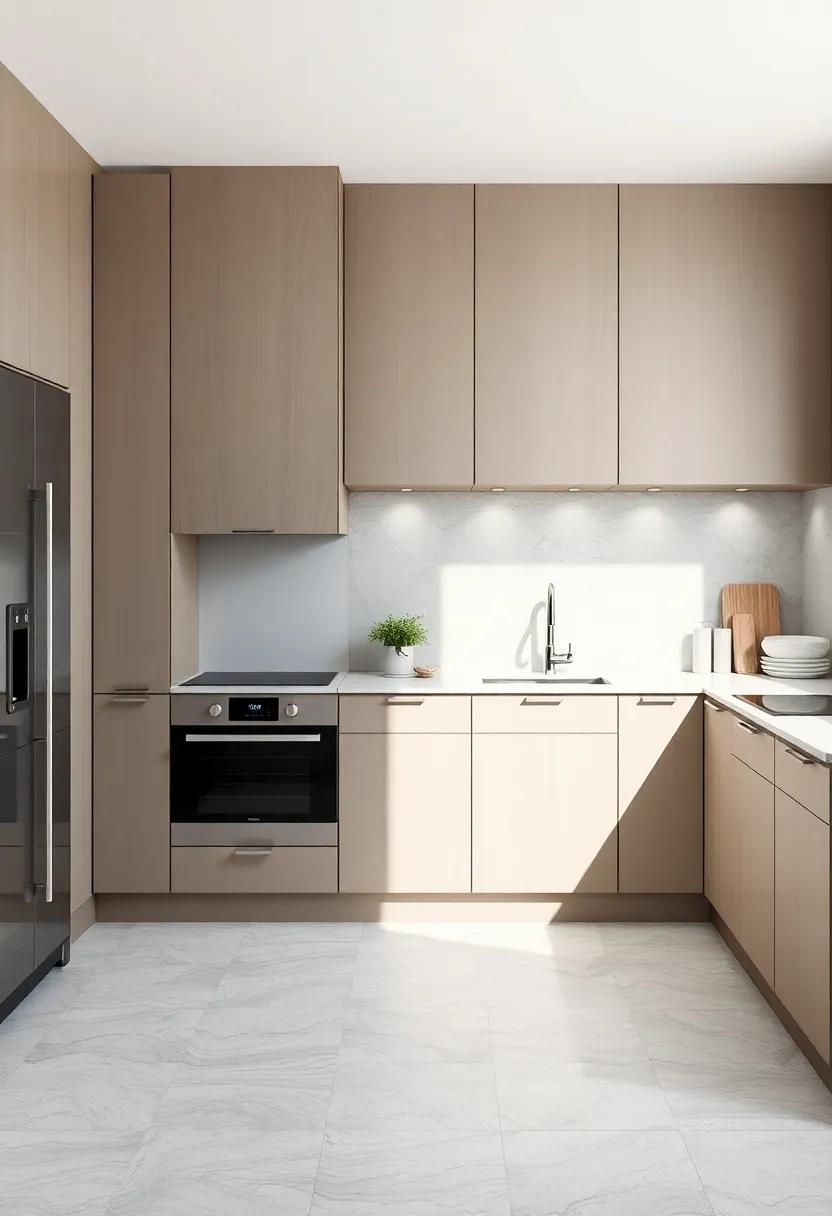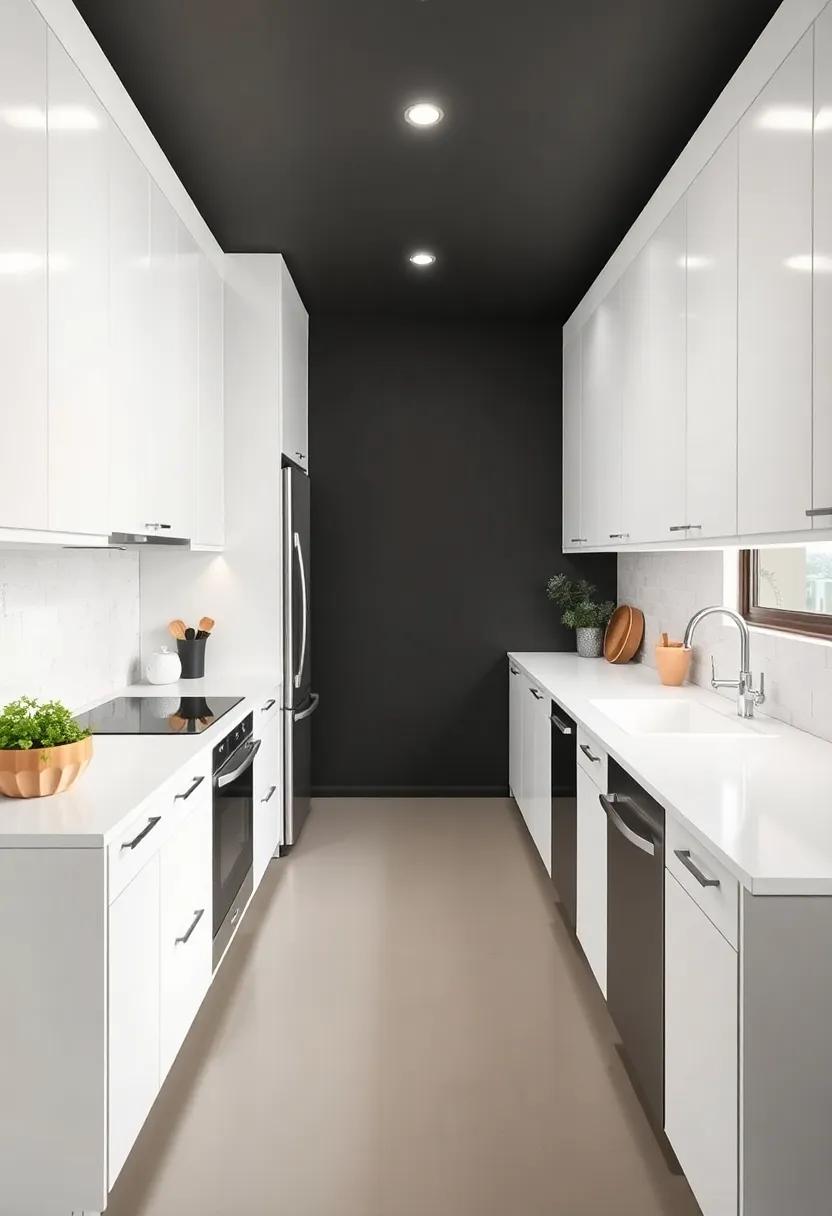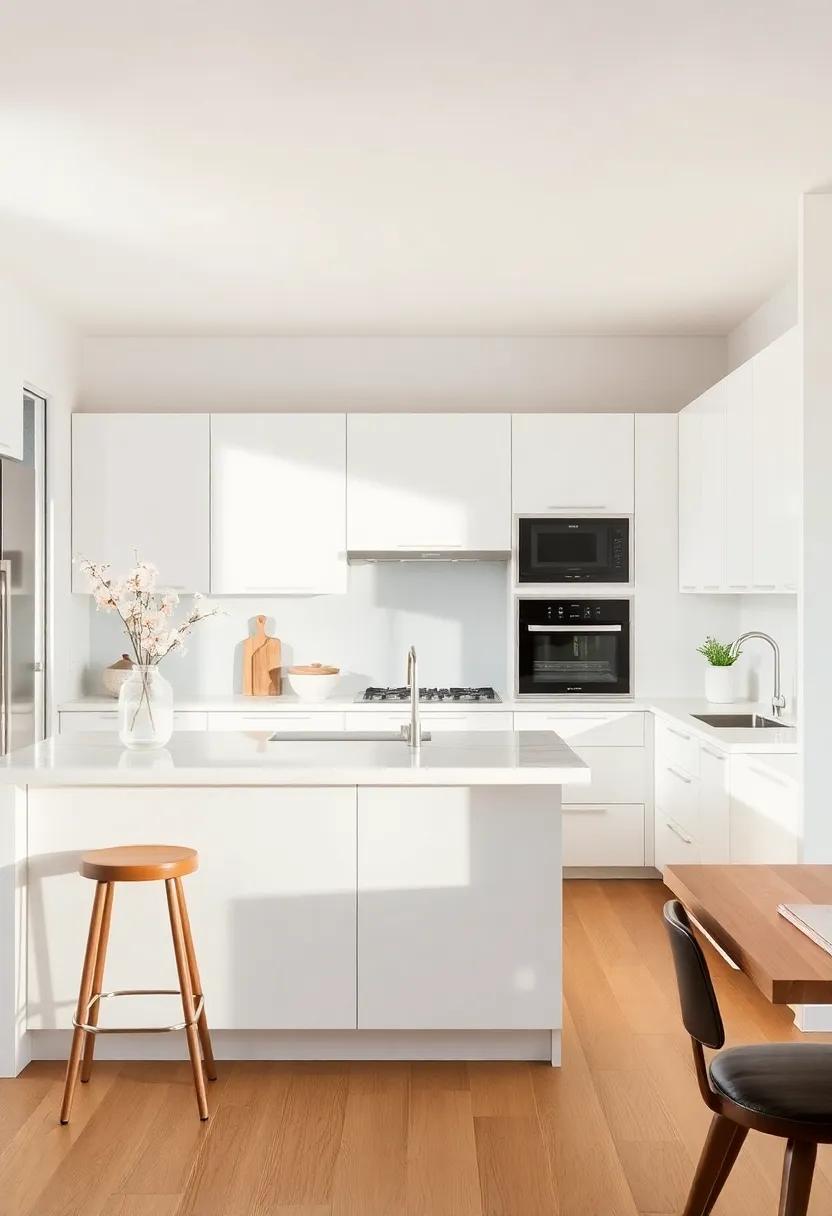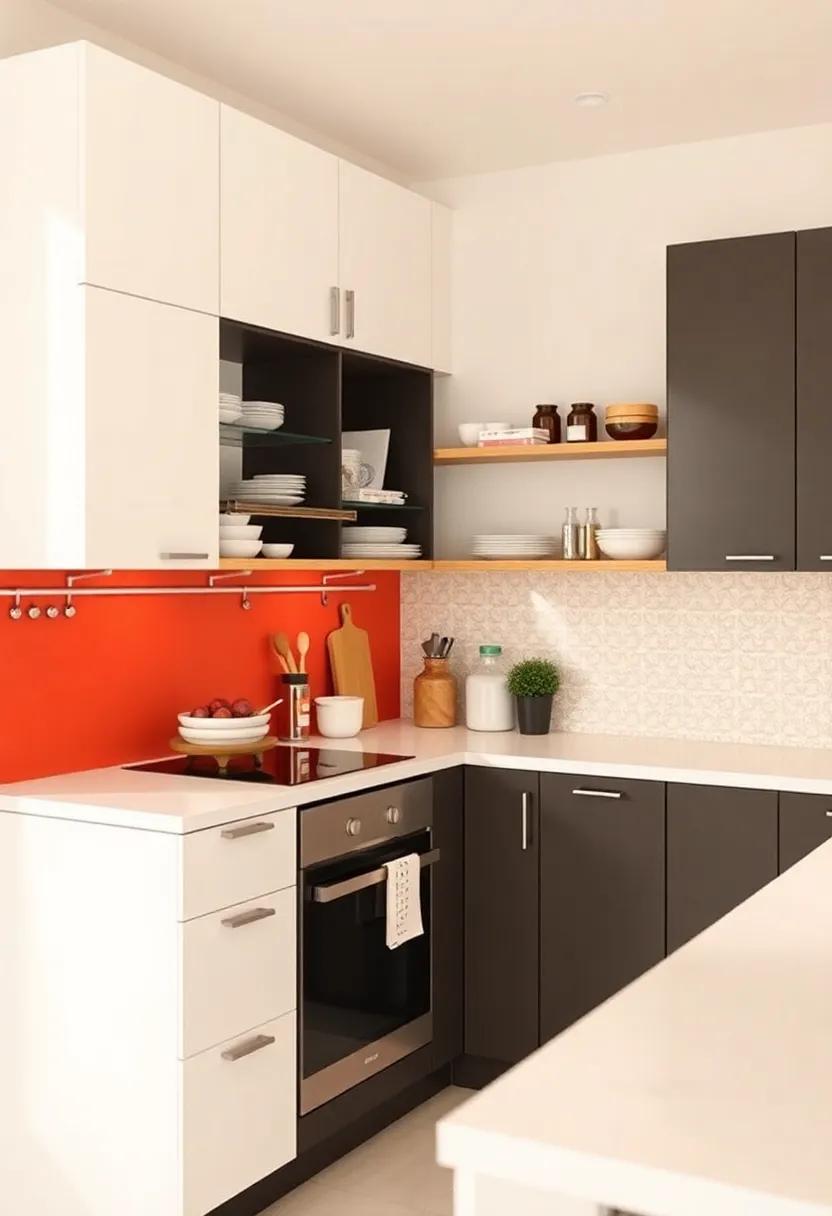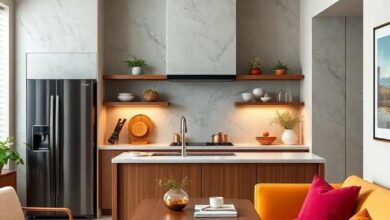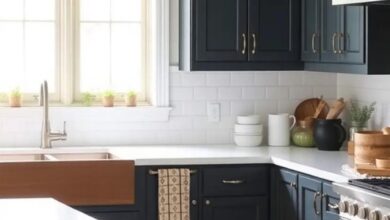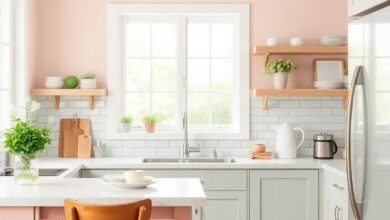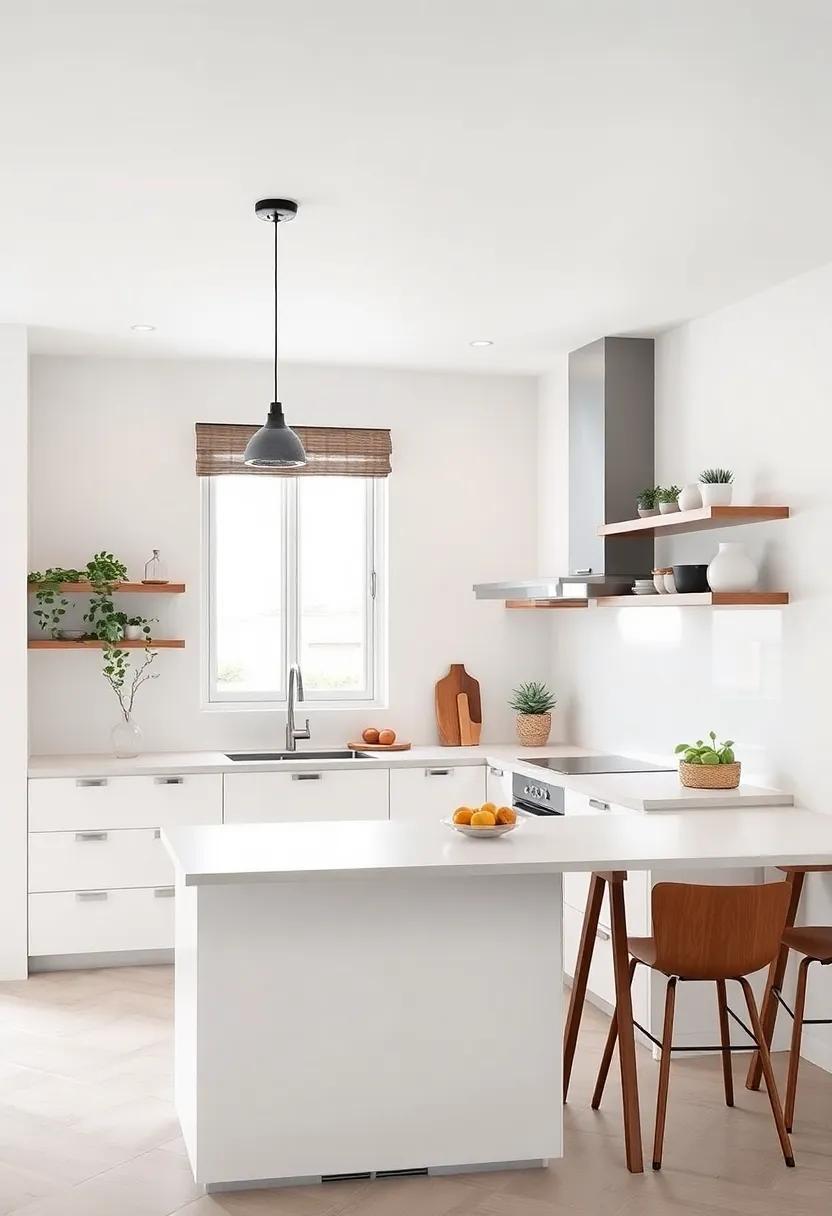
Maximizing Space: Creative Design Ideas for Small L-Shaped Kitchens
In an era where urban living often comes with the challenge of limited square footage, small kitchens are becoming a hallmark of modern homes. Especially, L-shaped kitchens—loveable for their efficient use of space—can feel like a puzzle awaiting imaginative solutions. If you find yourself navigating the tight corners and compact layouts of an L-shaped kitchen, fear not! This article delves into a treasure trove of creative design ideas that will help you maximize every inch without sacrificing style or functionality. From innovative storage solutions to clever lighting techniques, we’ll explore how you can transform your culinary space into a haven of creativity and efficiency. Whether you’re a seasoned chef or a casual cook, the potential to enhance your small kitchen is within reach, and it begins with a willingness to think outside the box. Join us as we uncover the secrets to making your L-shaped kitchen both practical and visually appealing!
Embracing Vertical Space: Shelving Solutions for Small Kitchens
In small kitchens, every inch matters, and utilizing vertical space is a game changer. Installing floating shelves not only offers a trendy storage solution but also keeps your countertops clutter-free. Consider using open shelving for frequently used items, such as spices, dishes, and cookbooks, allowing for easy access while creating a sense of openness. Incorporate different shelf heights and depths to break monotony and add visual interest. A well-placed shelf can double as a display area for decorative items or plants, making the kitchen feel more inviting.
To maximize efficiency, explore multi-functional units that combine shelving with other elements, like a small ladder for reaching higher spaces or a pegboard for hanging utensils. Integrating a compact kitchen cart can further enhance flexibility; it offers additional storage and prep space while being easily movable. Here are a few clever tips to consider:
- Magnetic strips: Hang knives and metal utensils securely out of the way.
- Wall-mounted racks: Utilize corners or unused wall space for pots and pans.
- Tiered stands: Organize pantry staples in creative ways by adding levels.
Color Palette Exploration: Bright and Bold Options for L-Shaped Designs
In the realm of L-shaped kitchens, a bright and bold color palette can transform a compact space into a visually striking culinary haven.Consider incorporating hues that not only enhance the sense of space but also reflect personal style. Some vibrant color combinations to explore include:
- Cobalt Blue and Sunny Yellow: This playful duo energizes the environment, encouraging creativity while cooking.
- Coral Pink and Turquoise: A fresh and inviting palette that brings warmth and a coastal vibe to your kitchen.
- Mint Green and Bright White: an airy and spacious feel, perfect for making any small kitchen feel larger and more open.
When selecting your colors, it’s essential to balance them with complementary accents to maintain harmony. Utilize bold cabinetry or backsplashes, creating focal points that draw the eye without overwhelming the design. Below is an ideal color pairing table to help guide your L-shaped kitchen choices:
| Primary Color | Complementary Accent |
|---|---|
| Fiery Red | charcoal Gray |
| Bright Orange | Soft Cream |
| Electric Purple | Silver Accents |
Smart Storage hacks: Clever Cabinet Systems to Maximize Every Nook
Transform your L-shaped kitchen into a model of efficiency with innovative cabinet systems that utilize every available space. consider installing pull-out shelves and rotating corner units to ensure that even the back corners of your cabinets become accessible. With these features, you can store pots, pans, and pantry items in a way that everything is within arm’s reach.Additionally, adjustable shelving allows you to customize your cabinet height based on the items you need to store, providing both flexibility and organization.
Another game-changer for maximizing the storage potential in your kitchen is the use of under-cabinet organizers. These handy solutions can accommodate spice racks, cutting boards, and even cooking utensils, freeing up valuable drawer and counter space. Don’t forget about the vertical storage solutions such as wall-mounted racks for herbs or mugs; they add charm while keeping your essentials handy. By strategically selecting and arranging these clever systems, you’ll create a seamless flow that enhances both usability and style in your compact culinary haven.
Illuminating Ambiance: Lighting Strategies for Cozy Kitchen Corners
Transform your cozy kitchen corners into inviting spaces with the right lighting strategies. Utilize warm LED lights that create a comforting glow while being energy-efficient. Consider adding under-cabinet lighting to illuminate work surfaces and enhance the functional appeal of your kitchen. Pendant lights above a small dining nook or a breakfast bar can serve as statement pieces, providing both task and ambient lighting. Here are some versatile options to consider:
- Dimmer switches: Adjustable lighting for various moods.
- Multifunctional fixtures: Light sources that adapt to different activities.
- decorative lamps: Bring character with unique designs.
Don’t overlook the role of natural light in achieving a warm atmosphere. Strategically placing mirrors can amplify sunlight and make your space feel larger. Simple window treatments, like sheer curtains, allow light to filter through while maintaining privacy. Below is a simple guide to balancing artificial and natural lighting:
| Lighting Type | Effect | Ideal Placement |
|---|---|---|
| Natural Light | Adds warmth and openness | Windows and skylights |
| Task Lighting | Highlights work areas | Above counters and sinks |
| Ambient Lighting | Creates an inviting atmosphere | Throughout the kitchen |
Open Concept Flow: Integrating L-Shaped Kitchens into Living Spaces
Open concept designs have revolutionized modern living, particularly when it comes to integrating L-shaped kitchens into a seamless flow with living areas.By removing barriers and creating fluid transitions between spaces, this layout enhances social interactions and maximizes usability. Incorporating features like a kitchen island can reinforce this integration, serving as both a functional work area and a casual dining spot, while also maintaining visual connectivity with the living room.Elements such as open shelving can maintain a sense of openness while providing practical storage solutions. Consider using a cohesive color palette throughout both the kitchen and living area to create a harmonious ambiance that ties the two spaces together.
To further enhance the open concept feel, strategic lighting can play a pivotal role. Layered lighting with pendant lights over the kitchen island combined with soft ambient lighting in the lounge area creates an inviting atmosphere. Utilize smart layout solutions, such as wall-mounted appliances and integrated cabinetry, to free up precious floor space. A carefully designed color contrast strategy can define separate zones without the need for physical dividers. Additionally, incorporating multi-functional furniture in the adjoining living area, such as an ottoman that doubles as storage, can maintain the spacious feel while making every square foot count.
Multi-Functional Furniture: Transforming Tables and Chairs for Efficiency
In small L-shaped kitchens, every inch of space matters, making multi-functional furniture an essential component of your design strategy. Imagine tables that not only serve as dining surfaces but also include built-in storage or can be folded away when not in use. this versatility allows for more surface area when you need it while keeping the kitchen feeling open and airy. Look for models that feature extensions or drop-leaf designs to adapt to varying needs, whether you’re hosting guests or enjoying a quiet breakfast. Similarly, chairs with hidden storage compartments can keep clutter at bay, ensuring your kitchen remains a practical yet stylish space.
Consider the innovative potential of transforming your existing furniture into efficient solutions. As an example, a compact bar cart can double as a mobile prep station, providing the flexibility to move wherever you require it most. Additionally, stacking chairs can be a game changer, easily stored when not in use while offering a modern aesthetic. A well-designed fold-down table can attach to the wall,serving as a dining space that disappears when not needed. Evaluate your individual needs and invest in pieces that offer functionality without compromising on style, effectively bringing harmony to your small kitchen environment.
Countertop Choices: Selecting Materials that Enhance Space Perception
When designing a small L-shaped kitchen, the material you choose for countertops can significantly impact your space perception. Light colors and reflective surfaces can create an illusion of openness and airiness. Quartz and marble are excellent choices as they not only enhance light reflection but also offer a seamless appearance that minimizes visual clutter. For those looking for a more modern twist, consider recycled glass or polished concrete, as these materials can bring both elegance and a sense of spaciousness. Additionally, opting for a butcher block counter can introduce warmth and texture, contrasting beautifully with light cabinetry while maintaining a cozy feel without overwhelming the space.
To further optimize the functionality and aesthetic of an L-shaped kitchen, consider edge profiles that enhance the flow of the design.A razor-thin edge will create a clean, minimalist look, whereas a rounded edge can soften sharp lines and contribute to a more inviting vibe. Here’s a rapid comparison of popular countertop materials:
| Material | Pros | Cons |
|---|---|---|
| Quartz | Durable, low maintenance, comes in various colors | Can be pricey |
| Marble | Beautiful and unique veining, adds luxury | Prone to scratching and staining |
| Butcher Block | Warmth, good for food prep | Requires regular maintenance to prevent damage |
| Polished Concrete | Modern look, customizable | Can be cold and hard; may crack if not done properly |
| Recycled Glass | Eco-pleasant, unique aesthetics | Can be more fragile and less scratch-resistant |
Enhancing Workflow: Designing an Efficient Triangle in Tight Areas
To enhance workflow in small L-shaped kitchens, designing an efficient triangle can be crucial, especially in tight spaces.The key is to optimize the placement of the three main work areas: the stove,the sink,and the refrigerator. By ensuring that these elements form a functional triangle, you can improve accessibility and make cooking more enjoyable. Here are a few tips to consider:
- Maximize Counter Space: Create continuous counters that wrap around the corner,ensuring easy movement between the stove,sink,and fridge.
- Utilize Vertical Space: Install shelving or cabinets that reach up to the ceiling to minimize clutter and maximize storage.
- Incorporate Foldable Components: Use drop-leaf tables or extendable surfaces to provide additional prep space when needed.
Another way to reinforce the efficiency of your kitchen triangle is by paying attention to the layout of appliances and fixtures. Positioning them at the right distances can help maintain fluid movement, reducing the risk of stumbling over obstacles. Organize essential items within reach to streamline the cooking process. To visualize this improved workflow, consider a simplified layout table that outlines the ideal distances:
| Appliance/Fixture | Recommended Distance (Feet) |
|---|---|
| Sink to Stove | 3-6 |
| Stove to Fridge | 4-8 |
| Fridge to Sink | 4-6 |
By carefully planning the spatial dynamics of your kitchen, you can vastly improve both functionality and ease of use. With a little creativity and thoughtful design, even the smallest L-shaped kitchens can become efficient spaces where culinary magic happens.
Creative Backsplash Ideas: Adding Depth and Interest to Small Kitchens
When working with limited space in an L-shaped kitchen,the backsplash becomes an prospect to infuse personality and style without overwhelming the area. Opt for bold patterns or textured tiles that draw the eye while reflecting light, which can create the illusion of a larger space. you might consider using subway tiles in a unique layout, such as herringbone or chevron, to add a dynamic element. Incorporating mirrored tiles can also enhance brightness and depth, making the small kitchen feel more expansive.
Another innovative approach is to use a mosaic backsplash, allowing you to mix and match colors and shapes that resonate with your design theme. Materials like glass, wood, or metal can introduce different textures, enriching the visual interest. Consider including open shelving that not only serves as storage but also showcases decorative tiles or eclectic dishware,blending functionality with stylish aesthetics. To inspire creativity, below is a concise table featuring various backsplash materials and their benefits:
| Material | Benefits |
|---|---|
| Subway Tile | Timeless elegance, easy to clean |
| Glass | reflective, brightens the space |
| Mosaic | Versatile patterns, great for focal points |
| Metal | Industrial chic, durable and easy to maintain |
| Wood | Warmth and texture for rustic designs |
Decorative accents: Choosing Artwork and Plants for a Personal touch
Transform your small L-shaped kitchen into a vibrant haven by incorporating carefully selected artwork and plants. A few well-placed pieces of art can add character and personality to your space. Consider hanging framed prints or a colorful mural that reflects your style—this not only draws the eye but also makes the area feel larger. Additionally, integrating plants can introduce a natural element that softens the edges of your kitchen layout. choose low-maintenance varieties like succulents or herbs, which can be placed on windowsills or shelves, bringing life and freshness to your cooking environment.
When curating decorative accents, think beyond conventional methods. Use vertical space by installing floating shelves to display small potted plants or handcrafted pottery, which can serve as both functional and artistic. Additionally, consider creating a gallery wall with a mix of framed images and small hanging planters. this dynamic combination can serve as a stunning focal point while maximizing storage. Here’s a quick reference table for vibrant plants and suitable artwork types:
| Plant Type | Artwork Style |
|---|---|
| Succulents | Abstract Prints |
| Herbs (e.g., Basil, Mint) | Vintage Kitchen Posters |
| Pothos | Black and White Photography |
| Spider Plant | Whimsical Illustrations |
Maximizing Corner Cabinets: Innovative Solutions for Sliding and Pull-Outs
Corner cabinets can often feel like a neglected area in small kitchens. However, by implementing innovative sliding and pull-out mechanisms, you can transform these spaces into highly functional storage solutions. Consider installing sliding shelves that glide effortlessly, allowing you to access all items in the back without the hassle of reaching deep into the cabinet. This not only maximizes space but also enhances organization by making it easy to categorize pantry items,kitchen tools,or even small appliances.
Additionally, pull-out racks and trays can be a game changer for corner cabinets. These can be custom-designed to fit snugly within the cabinet’s structure,maintaining a clean aesthetic while boosting usability. Options may include:
- Lazy Susans for easy rotation of spices or canned goods.
- Vertical dividers for baking sheets and cutting boards.
- Pull-out trash bins that seamlessly blend into the cabinetry.
Such solutions not only maximize storage capacity but also fundamentally alter the way you interact with your kitchen, making cooking more enjoyable and organized.
Compact Appliances: Choosing the Right Size for Space Constraints
When dealing with space constraints in an L-shaped kitchen, selecting compact appliances is essential for maintaining both functionality and elegance. To determine the right size, consider the following factors:
- Measure Your Space: Ensure you have accurate measurements of the available countertop and cabinet space.
- Functionality Needs: Prioritize appliances that meet your cooking habits while fitting seamlessly into your layout.
- Multi-Function Devices: Look for appliances that can perform multiple tasks, such as toaster ovens that bake, broil, and toast.
Incorporating compact appliances is about striking a balance between design and efficiency. Below is a quick guide on popular compact appliances for small kitchens:
| Appliance | Size (inches) | Features |
|---|---|---|
| Mini Refrigerator | 24 W x 28 H | Energy-efficient, adjustable shelves |
| Dishwasher Drawer | 24 W x 18 H | Compact design, half-load option |
| Countertop Microwave | 20 W x 12 H | Multiple power settings, space-saving |
Reflective Surfaces: Using Mirrors to Create an Illusion of Space
In a small L-shaped kitchen, the strategic placement of mirrors can work wonders in enhancing the perception of space. By incorporating reflective surfaces into your design, you can create a sense of openness and depth. Consider the following placement ideas:
- Backsplash mirrors: Installing a mirrored backsplash can brighten up the area while giving the illusion of a larger cooking space.
- Accent Walls: A feature wall clad in mirrors can act as a stunning focal point that also complements your kitchen’s layout.
- Cabinet Fronts: Using mirrored finishes on cabinet doors can add elegance and further enhance the sense of space.
To maximize the effectiveness of reflective surfaces, it’s essential to consider their positioning in relation to light sources. Natural light reflects beautifully,so placing mirrors across from windows or near light fixtures can create a more vibrant atmosphere. Here’s a simple table showcasing the best placements for mirrors and their effects:
| Mirror Placement | Effect on Space |
|---|---|
| Across from Windows | Increases natural light and openness |
| Near Cooking Areas | Provides a modern feel and reflects movement |
| Above Countertops | Enhances visual height and depth |
Flexible Layouts: Experimenting with Island Arrangements for Versatility
embracing versatility in small L-shaped kitchens is essential for enhancing both functionality and aesthetics. By experimenting with island arrangements, you can create dynamic layouts that serve multiple purposes. Consider placing a movable island that can function as both a prep station and a casual dining area. this flexibility not only maximizes the use of space but also allows for easy reconfiguration based on your needs. Place bar stools on one side and reserve the other for prep work,keeping the flow open and inviting.
Another innovative approach is to use an L-shaped island that complements the kitchen’s layout. By integrating features such as storage below or built-in appliances,this practical design maintains a clean and uncluttered look. Here are some elements to consider when crafting your island:
- Color Coordination: Choose colors that blend seamlessly with cabinetry.
- Multi-tiered Levels: Incorporate different heights for added visual interest.
- Drop-down Extensions: Add foldable sections for extra workspace when needed.
Cohesive Design Elements: Matching Styles for a Harmonious Flow
Creating a visually appealing kitchen space involves more than just choosing the right appliances. Cohesion is key, and selecting a unified style can bring the room together, making it feel spacious and inviting. Consider using color palettes that flow seamlessly throughout the cabinetry, countertops, and walls. Soft pastels, neutral tones, or even monochromatic schemes can create a sense of tranquility, defeating the cramped feel frequently enough associated with small, L-shaped kitchens.
- Cabinetry: Opt for a smooth finish that complements your countertops.
- Countertops: Choose durable materials that match or contrast subtly with your cabinets.
- Backsplash: Use patterned tiles that reflect the color scheme for continuity.
- Faucets and Fixtures: Select hardware in a finish that corresponds with your overall aesthetic.
Incorporating decorative elements that match your selected style further enhances the harmonious vibe. Consider the use of textiles such as dish towels, rugs, and curtains that align with your chosen color scheme. The right accessories, like wall art or decorative bowls, can serve both functional and aesthetic purposes while maintaining the kitchen’s cohesive look. Additionally, strategically placed lighting fixtures can elevate the ambience without overpowering the space.
| Element | Style Approach |
|---|---|
| Textiles | Match colors with cabinetry |
| Lighting | Choose fixtures that blend with hardware |
| Accessories | Select decor that complements color palette |
